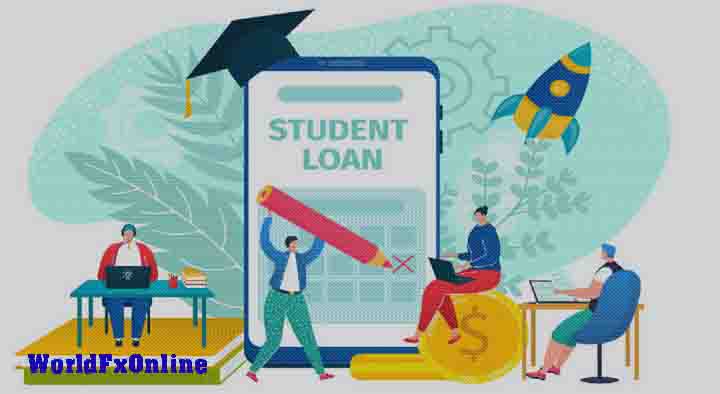Federal Student Loans Canada – Federal student loans are interest-free, full-time student loans. The Government of Canada will pay interest on your Canadian student loan while you are studying full-time. At the end of each Canadian academic year, you must confirm the status of your student.
Debt settlement begins six months after you finish your studies or stop being a full-time student. The interest on your loan accrues from the time you stop being a full-time student.
If you have a Canada Student Loan and a provincial loan (excluding Canada-Ontario and Canada-Saskatchewan Integrated Loan), you must repay the loan separately.
Table of Contents
Federal Student Loans Canada – Provincial Loan
In addition to the federal student loan, you may also be eligible for a full-time student loan from the province or region in which you live.
Eligibility for both federal and provincial loans is assessed using the same application form, but each program may have slightly different requirements.
Provincial debt varies by province. For specific details for your province, please contact your Student Financial Aid Office.
Please note that residents of Ontario or Saskatchewan will only receive loans when applying for federal and provincial student loan funds.
You May Also Like: international-student-loans-for-African-students
Type of Federal Student Loan
Federal Student Loans Canada, There are three types of federal student loans:
Direct Subsidized Loans
Direct Unsubsidized Loans
D-irect PLUS Loans, There are two types of direct plus loans: grad plus loans for undergraduate and professional students, as well as loans that can be issued to a student’s parents.
Federal Student Loans Canada, loans are available through the Federal Direct Loan Program. Since federal loans offer different benefits than private student loans, you should always look for them first.
D – irect Subsidized Loans: For students with financial requirements as determined by federal regulations.
When a graduate student is in school for at least half the time, the suspension period (a time when the loan repayment is temporarily suspended), or the grace period (period, usually six months after you graduate or leave school, before you start) and Pay interest).
Direct Un-Subsidized Loans: There are federal student loans that are not based on financial needs. Determine the amount you can borrow based on your school attendance costs and other financial aid.
Interest is charged and accrued during all periods (when unpaid interest is added to the principal amount of the student loan), even while you are in school, during remission, and during delays. This increases your total federal debt costs.
Direct Plus Loans: Unsubsidized credit-based federal loans for dependent students and parents of undergraduate/professional students.
After you run out of other financial aid, PLUS loans can help pay for tuition up to the cost of attendance (your school estimates the amount you need to attend in one year).
Interest is charged across all tenors and will be capitalized. This increases your total federal debt costs.
Subsidized Loans Canada benefits
You have flexibility.
Although any student loan — federal or private is a legal contract and must be repaid-with interest, the federal student loan usually offers a more flexible alternative than the private student loan.
For example, with a federal student loan, the borrower may change their loan repayment options even after the loan has been disbursed (sent to your school).
You can pay based on your salary.
Some federal students allow loan income-driven (or income-based) repayment plans, which limit payments based on the borrower’s income and family size.
You do not have to have a strong credit history to get a federal student loan.
Unlike private student loans, most federal student loans do not require the borrower to have a strong credit history.
This may be especially helpful for recent high school graduates who plan to go to college but do not have enough time to build their own credit.
You don’t need a cosigner.
Unlike most federal student loans, except for direct PLUS loans, the borrower’s credit is not considered, so it is not necessary to apply with a cosigner.
How to apply for federal student loans Canada for college
Applying for a federal student loan is free. All you have to do is apply for a free (Federal Student Aid (FAFSA).
In addition to the Federal Student Loan, the FAFSA determines your eligibility for other federal student aids such as grants and work-study. You must submit FAFSA Students enroll in college to get help.
What happens after you submit FAFSA?
After you submit the FAFSA, the government will send you a Student Aid Report (SAR), giving you preliminary information about your eligibility for federal student assistance.
Colleges that you have included in your FAFSA will have access to this information and will use it to determine the number of federal grants, work-study, and loans you may qualify for.
The colleges to which you are enrolled will send you an offer of financial assistance Details of the financial assistance you will receive – including federal student loans, grants, and work-study.
The amount of federal assistance you receive from each school may vary, such as the cost of attending each school.
Federal Student Loans Canada Terms and Conditions
All student loan – federal and personal – terms are included. The most important things you should consider when taking out a college loan are:
- Is it a federal student loan or a personal student loan?
- Who is the servant?
- Does the loan have a co-signer?
- What is the interest rate?
- Are interest rates fixed or variable?
- When do you have to pay during or after school?
- What is the penalty for late payment?
You May Also Like: loans-for-international-students-in-USA-without-cosigner

